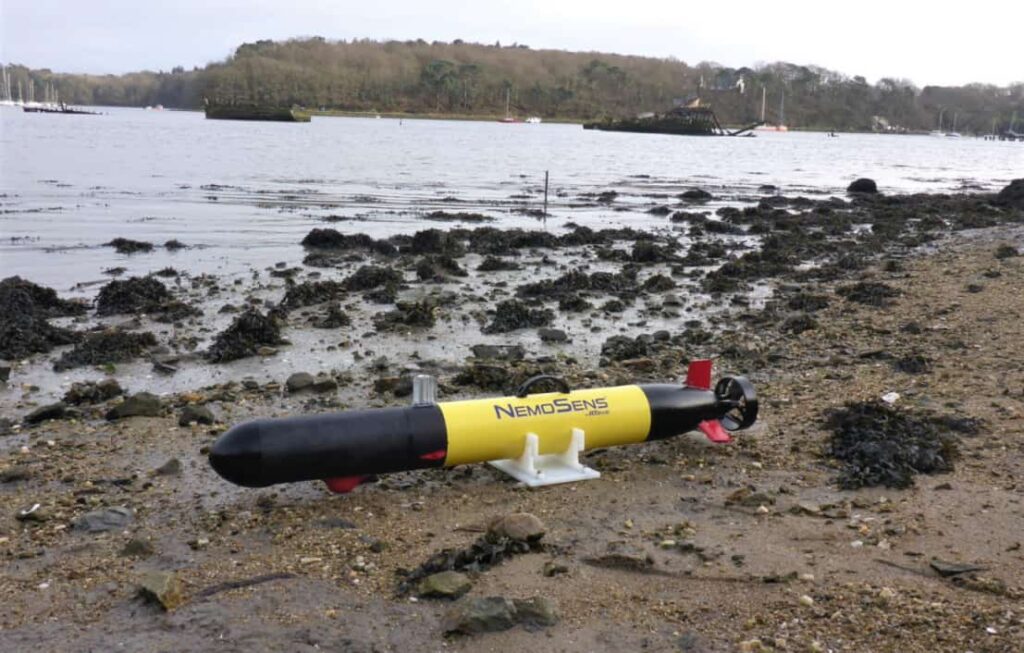RTSYS has integrated the RBRlegato3 CTD (conductivity, temperature & depth) sensor from oceanographic instrument developer RBR onto its NemoSens micro-AUV (autonomous underwater vehicle). The RBRlegato3 provides low-power measurements of temperature, pressure, salinity, and sound velocity.
The 90 cm-long NemoSens is an evolution of RTSYS’ larger AUVs, and is designed for water quality, hydrographic, and acoustic surveys, building on the company’s extensive acoustics experience. The lightweight and modular vehicle uses low-power technology to operate for more than 12 hours at 3 knots, down to depths of 300m. The system’s open Linux architecture allows users to develop and implement their own detection algorithms specially optimized for particular missions and specific payloads such as the RBRlegato3 CTD.
The RBRlegato3 has been selected as one of the first payloads to be integrated into the NemoSens due to its suitability for a wide range of scientific research and commercial surveys. RTSYS focused on mechanical integration of the payload in order to make mounting and removal as efficient as possible for users, with the goal of keeping the AUV’s diameter the same and achieving flush, streamlined integration between the payload and vehicle.
The RBRlegato3 was mounted on a rack in the wet-bay section of the AUV’s nose-cone. Half of the nose-cone pivots open on a hinge to access the RBRlegato3. A direct connector-to-connector link was used, resulting in no requirement for additional cable and reducing the overall length of the final AUV.
With this flexible mounting solution, customers can reuse the same AUV for different studies, as the sensor can be mounted and removed in the field without RTSYS’ assistance. The RBRlegato3 logs data to the AUV’s onboard memory via a serial communication link, and the data can be easily retrieved through Wi-Fi once NemoSens is recovered.











